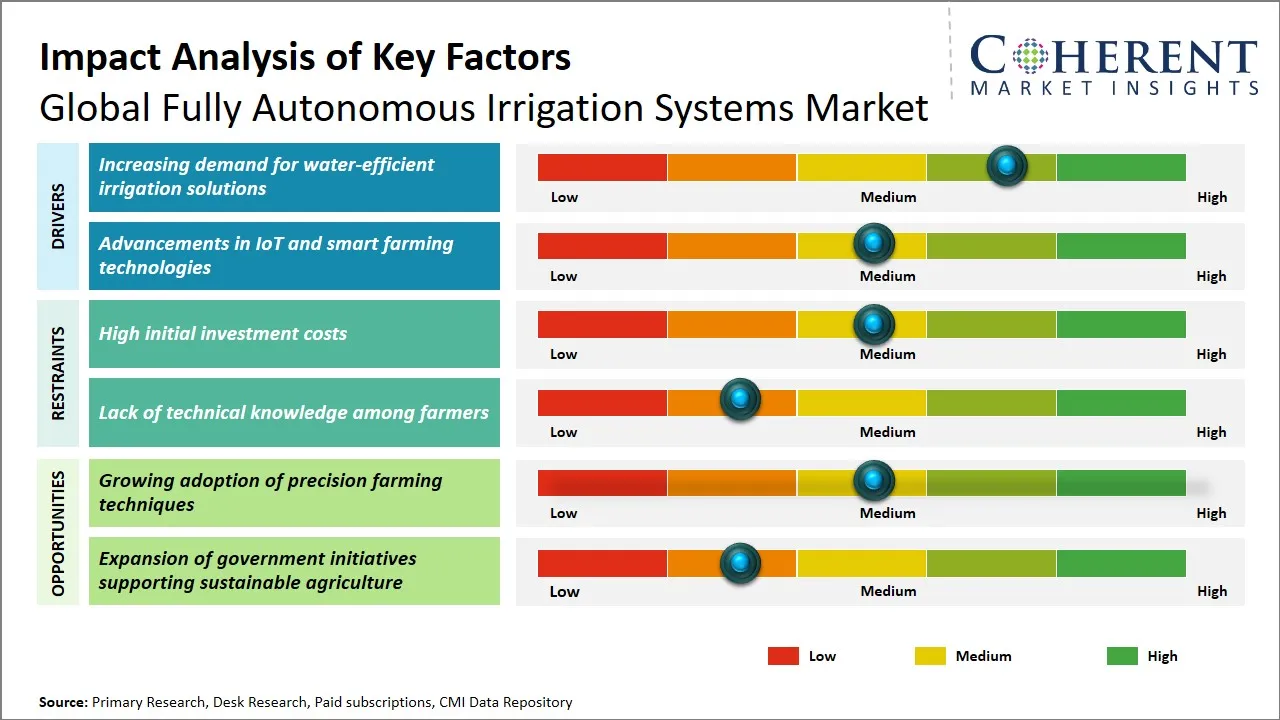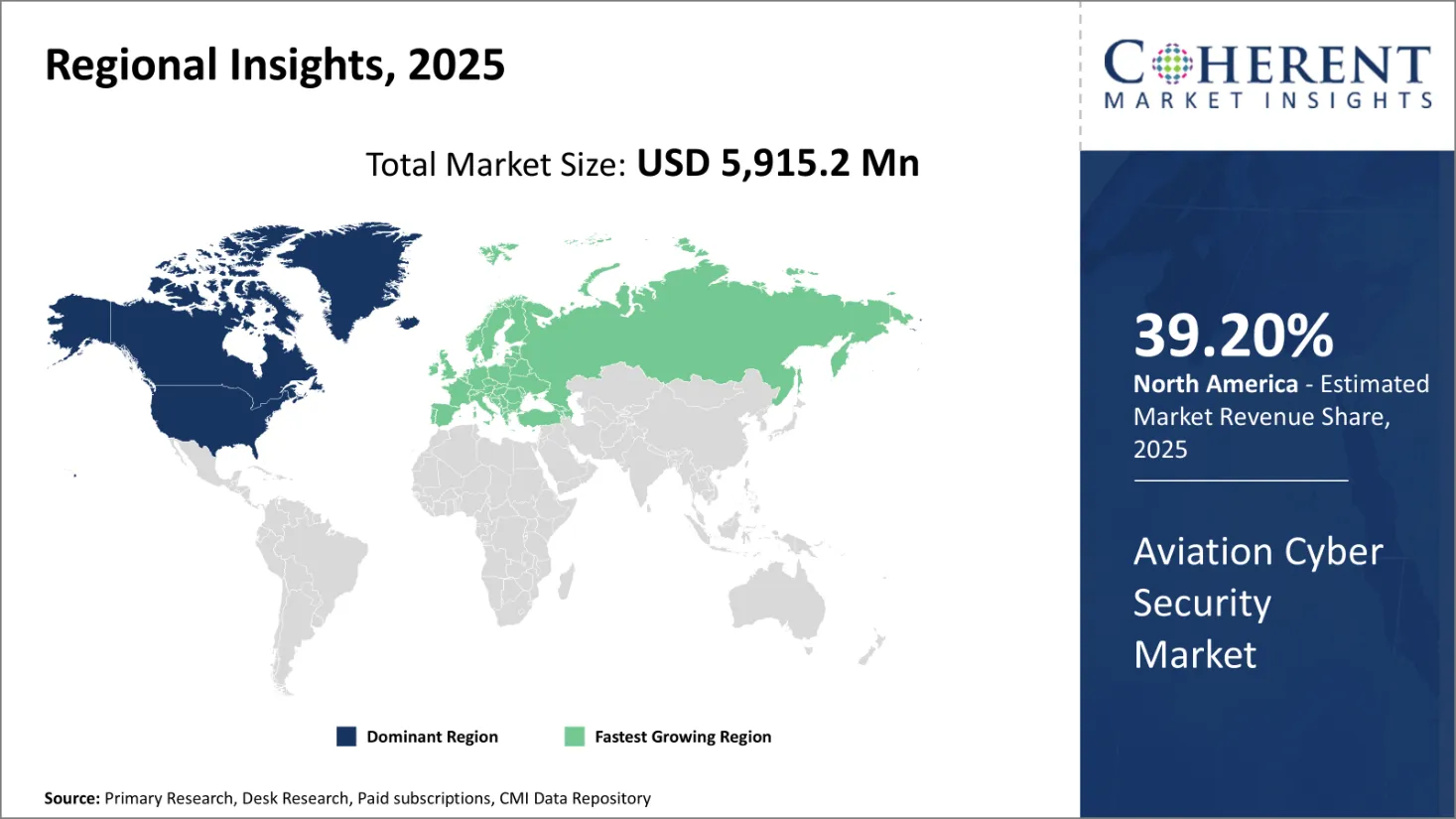Global aviation cyber security market is estimated to be valued at USD 5,915.2 Mn in 2025 and is expected to reach USD 9,715.7 Mn by 2032, exhibiting a compound annual growth rate (CAGR) of 7.3% from 2025 to 2032.

To learn more about this report, Download Free Sample
The global aviation cyber security market is growing steadily. This is because more and more aviation systems are going digital and the threat of complex cyberattacks on airlines, airports, and aircraft systems is growing. As more and more flight operations and passenger services depend on connected technologies, cloud services platforms, and software applications, strong cybersecurity frameworks are becoming more important throughout the aviation ecosystem.
|
Current Event |
Description and its impact |
|
Rise in Cyberattacks Targeting the Aviation Sector |
|
|
Global Regulatory Push for Aviation Cyber Resilience |
|
Uncover macros and micros vetted on 75+ parameters: Get instant access to report
New technologies are changing the way the aviation cyber security market will look in the future. As the aviation industry goes more digital, technologies like machine learning (ML) and artificial intelligence (AI) are being used to improve the ability to find and respond to threats. These tools make it possible to spot unusual patterns in user behavior and network traffic, which lets you stop possible cyber threats in real time. AI-powered systems can speed up response times to incidents, cut down on human error, and automate security protocols.
For instance, in October 2025, Airside Intelligence introduced cutting-edge capabilities designed to enhance safety, efficiency, and sustainability across airport environments.
The managed services segment is projected to dominate the global aviation cyber security market with a 58.6% share in 2025. This leading position is driven by the growing preference among aviation companies for cloud-based platforms that offer scalability, rapid deployment, and cost efficiency. These solutions significantly reduce the need for capital investment in physical infrastructure and dedicated cybersecurity personnel.
Based on Deployment type, the cloud/hosted segment is projected to hold dominant position in the global market, owing to its scalability, cost-effectiveness, and ease of integration with existing IT infrastructure. As organizations increasingly move toward digital transformation and remote operations, cloud-based quantum key distribution solutions offer flexible and rapid deployment without the need for extensive on-premises hardware.
The cloud security segment is estimated to hold the highest share in the aviation cyber security market revenue by 2025. The increasing reliance on cloud-based software for critical flight operations, aircraft systems, and passenger data management has made cybersecurity a top priority for aviation stakeholders. This segment’s growth is fueled by the need to protect sensitive information against cyber threats such as data breaches, malware, and unauthorized access.
In October 2025, Kyndryl launched the Aviation Industry Cloud Solution, an AI-powered platform on Google Cloud designed to help airlines modernize operations, harness data, and enhance customer and workforce experiences. The solution leverages Kyndryl's industry expertise to provide secure data access, streamline processes, and drive continuous innovation.
Based on solution, the antivirus and anti-malware segment is projected to hold dominant position in the global market, owing to the increasing frequency and sophistication of cyberattacks targeting both individuals and enterprises. As malware continues to evolve with advanced techniques such as ransomware, spyware, and zero-day exploits, there is a growing demand for robust security solutions that can detect, prevent, and respond to these threats in real-time.

To learn more about this report, Download Free Sample
North America is anticipated to maintain a dominant position in the global Aviation Cyber Security Market, accounting for approximately 39.2% of total market revenue in 2025. This regional strength is primarily driven by comprehensive government initiatives focused on enhancing aviation cyber resilience and national security. The United States plays a pivotal role, supported by the presence of top-tier cybersecurity firms and a proactive regulatory environment that fosters innovation.
Additionally, significant investments in airport infrastructure modernization, digital transformation of airline operations, and real-time threat detection technologies are accelerating the adoption of aviation cyber security solutions across the region.
For instance, in May 2025,SITA, the leading IT provider for the air transport industry, released the 2024 North American Air Transport IT Insights report, developed in collaboration with Airlines for America (A4A).
Europe is expected to remain a vital region in the aviation cyber security market share through 2025, owing to stringent cybersecurity regulations and ongoing digitalization across the aviation ecosystem. Countries such as Germany, France, and the United Kingdom are leading the charge with targeted investments in airport IT upgrades and cloud-based security platforms.
The European Union’s emphasis on data protection (GDPR) and aviation-specific cyber standards is compelling airlines and airport operators to adopt robust security frameworks. Collaborative R&D projects and cross-border cybersecurity initiatives further contribute to the region’s increasing reliance on advanced cyber defense systems.
The United States and Canada are the leading countries in the North American aviation cyber security market, which is projected to maintain its global dominance with a 33.7% revenue share in 2025. The U.S. benefits from a mature cybersecurity ecosystem, significant investments in airport infrastructure modernization, and strong regulatory frameworks supporting aviation safety. It is home to major cybersecurity firms and innovative tech companies advancing AI-driven threat detection and real-time monitoring systems.
For instance, in August 2024, US Federal Aviation Administration (FAA) has recently unveiled a proposal for new rules governing the cyber security of aircraft and equipment.
Canada contributes through national cyber defense strategies and enhanced digital infrastructure at its airports. Both countries benefit from public-private collaborations that promote the deployment of secure aviation technologies.
For instance, in December 2023, Cyviation announced a collaboration agreement with Deloitte Canada to offer a combined solution utilizing the firm’s extensive cyber security consulting and professional services and Cyviation’s advanced aircraft cybersecurity solutions, providing multiple layers of cyber resilience ranging from fleet assessment and aircrew training to aviation security SIEM and real-time airborne detection.
| Report Coverage | Details | ||
|---|---|---|---|
| Base Year: | 2024 | Market Size in 2025: | USD 5,915.2 Mn |
| Historical Data for: | 2020 To 2024 | Forecast Period: | 2025 To 2032 |
| Forecast Period 2025 to 2032 CAGR: | 7.3% | 2032 Value Projection: | USD 9,715.7 Mn |
| Geographies covered: |
|
||
| Segments covered: |
|
||
| Companies covered: |
Airbus SE, BAE Systems, Inc., F-Secure, General Dynamics Corporation, Harris Corporation, Palo Alto Networks, Inc., Raytheon Company, General Electric Company, Computer Sciences Corporation, BluVector Inc., Thales Group, and Rockwell Collins Inc. |
||
| Growth Drivers: |
|
||
| Restraints & Challenges: |
|
||
Uncover macros and micros vetted on 75+ parameters: Get instant access to report
As the aviation industry moves towards more automation and integration of complex systems, the number of electronic control modules installed in modern aircrafts is rising at a tremendous pace. Earlier aircraft designs had relatively fewer electronic control units to manage discrete functions like engine control, cabin pressure control, navigation aids, etc. For example, the Boeing 777 uses around 200 computers to control various aircraft functions compared to just few in older aircraft models.
With the increasing adoption of connectivity solutions, the electrification of aircraft systems and use of critical digital platforms, the threat from cyber-attacks is increasing continuously in the aviation industry. This presents a big opportunity for the cyber security solution providers to develop innovative and tailored solutions according to the changing requirements of aircraft OEMs and airlines.
Share
Share
About Author
Ankur Rai is a Research Consultant with over 5 years of experience in handling consulting and syndicated reports across diverse sectors. He manages consulting and market research projects centered on go-to-market strategy, opportunity analysis, competitive landscape, and market size estimation and forecasting. He also advises clients on identifying and targeting absolute opportunities to penetrate untapped markets.
Missing comfort of reading report in your local language? Find your preferred language :
Transform your Strategy with Exclusive Trending Reports :
Frequently Asked Questions
Joining thousands of companies around the world committed to making the Excellent Business Solutions.
View All Our Clients